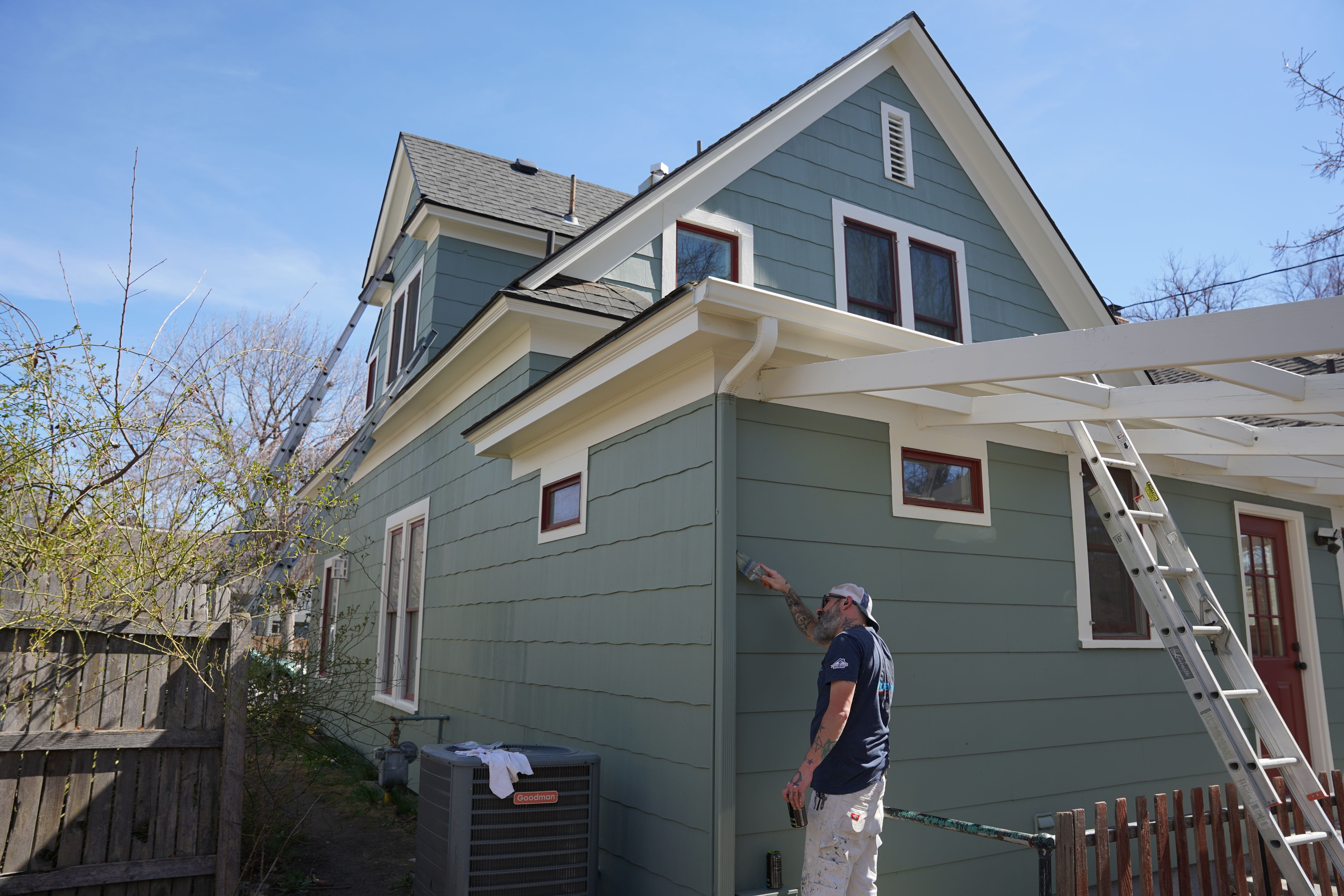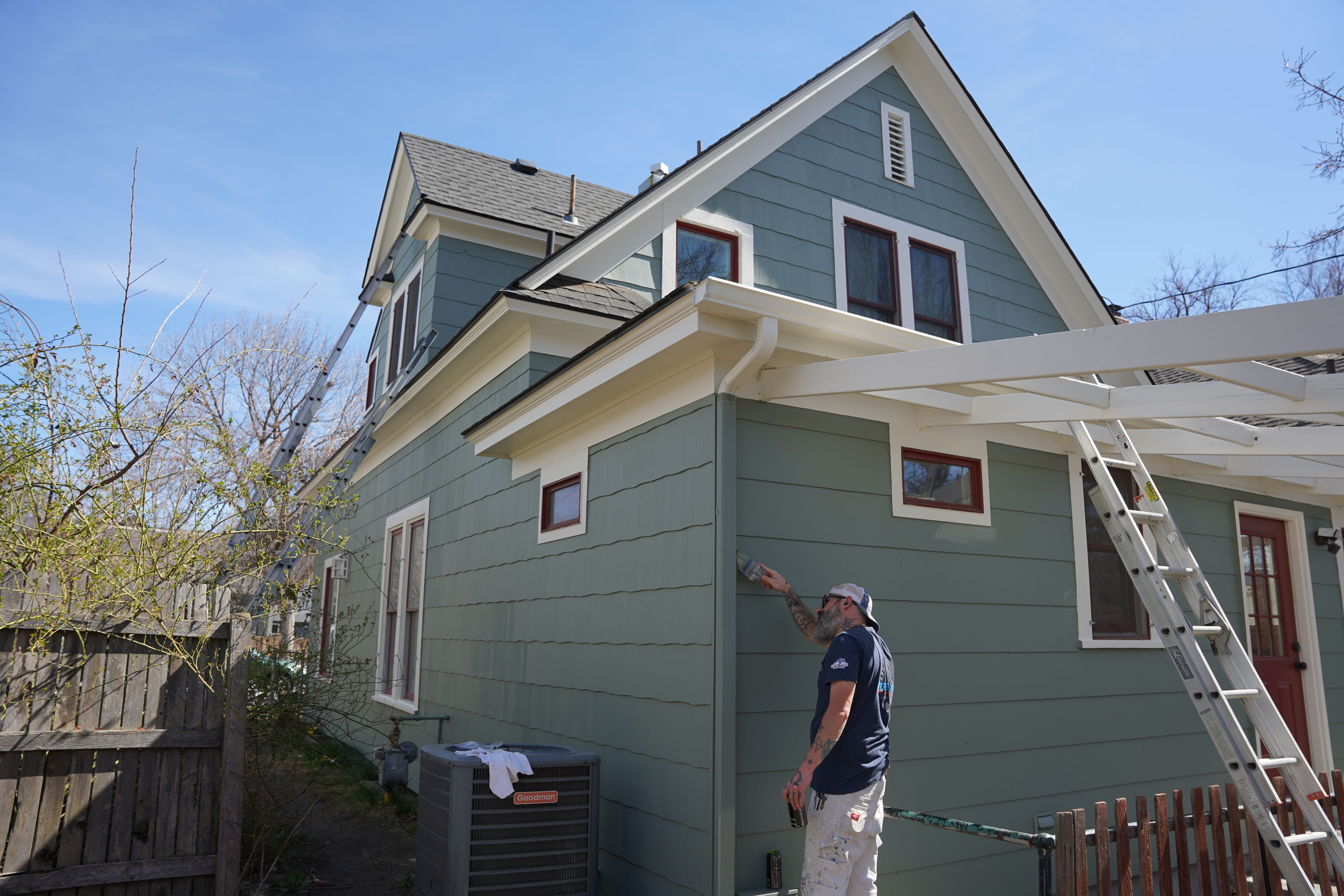DIY vs. Hiring a Pro for Painting the Exterior of Your Home
April 18th, 2025
5 min read
By Jud Masters

So, you want to freshen up your home’s exterior, but you’re starting to wonder: Should I paint it myself or hire a pro?
Maybe you’re looking to save money or worried that hiring someone might not be worth the cost. You may even have some painting experience, but spending your weekends on a ladder, scraping and priming doesn’t sound that fun either. And if you get it wrong, the paint might not just look bad—it may not even last.
At Roe Painting, we’ve helped thousands of homeowners through successful exterior painting projects, and we’ve seen both sides of this decision up close—the wins and the regrets. Whether it’s coaching DIYers on how to prep properly or fixing botched jobs that started with good intentions, we know the realities behind each approach.
In this article, we’ll break down the true cost, time, quality, and risk involved in both DIY and professional exterior painting. By the end, you’ll have a clear understanding of which route makes the most sense for your specific situation—and what to do next if you choose to hire a pro.
TABLE OF CONTENTS
- How Much Does It Cost to Paint Your Home's Exterior?
- DIY Exterior House Painting: Process and Expectations
- Cost of Hiring a Professional
- DIY or Hire a Professional Painter: Which Option Makes the Most Sense for You?
How Much Does It Cost to Paint Your Home’s Exterior?
Most people head the DIY route to save money, which is understandable. Exterior home painting isn’t cheap, but the right investment can save you money in the long run from having to do multiple repaints or repairs. Below, we will break down the cost of DIY and professional exterior painting.

DIY Exterior House Painting: What It Really Costs
At first glance, doing it yourself may seem like the cheapest option. But before you grab a brush and a weekend off, it’s worth understanding the full cost breakdown—because paint is only one piece of the equation.
Here’s what a typical homeowner might expect to spend to paint a 1,500-2,000 square foot home on their own:
Item |
Estimated Cost |
|
Exterior Paint (8-15 gallons) |
$400-$600 |
|
Primer (if needed) |
$100-$200 |
|
Brushes, Rollers, Paint Trays |
$30-$60 |
|
Drop Cloths, Tape, Masking Supplies |
$40-$80 |
|
Caulk, Wood Filler, Patching Materials |
$20-$50 |
|
Ladder or Scaffold Rental (3-5 days) |
$100-$250 |
|
Pressure Washer Rental (1 day) |
$50-$100 |
|
Paint Sprayer Rental (optional) |
$70-$150 |
|
Protective Gear (masks, goggles, gloves) |
$20-$50 |
|
Miscellaneous Tools (scrapers, sanders) |
$25-$75 |
|
Total Estimated Cost: |
$750-$1,600+ |
Don't forget: If you don’t already own basic tools or ladders, your upfront investment could be higher. Rentals can help reduce costs, but add time and logistical complexity to your project.
What You’re Paying With: Time
While you might save cash upfront, you’re trading your time–and likely a good chunk of your weekends. Prepping, priming, painting, and cleanup often take 3 to 7 days, depending on the size of your home, skill level, and weather delays.
DIY Exterior House Painting: Process and Expectations
If you’re leaning toward doing it yourself, it’s important to understand the full scope of what’s involved—from prep to final coat. This multi-step process can stretch across several days (or weeks), depending on the size of your home and your experience level. Here’s what you can expect from painting your home’s exterior.
Typical Steps for a DIY Exterior Paint Job:
1. Inspection & Planning: Assess surface condition, measure square footage, and choose paint type and color.
2. Cleaning: Gently pressure wash the siding to remove dirt, mildew, and flaking paint.
3. Prep Work: Scrape loose paint, sand rough spots, and fill holes/cracks with caulk or wood filler.
4. Protect Surroundings: Cover landscaping, windows, light fixtures, and trim with plastic or drop cloths.
5. Priming: Apply primer if needed, especially on bare wood or patched areas.
6. Painting: Apply one or two coats of paint using a brush, roller, or sprayer—while safety navigating ladders or scaffolding.
7. Touch-Ups & Cleanup: Inspect for missed spots, remove tape, clean tools, and dispose of material safely.
Note: Depending on the weather, prep, and complexity of your home, this process can take 3-7 days or more for most homeowners.
While taking on a DIY paint job can be rewarding, it’s also time-intensive, physically demanding, and leaves little room for error. That’s why many homeowners choose to bring in professionals, especially when quality, safety, or time constraints are top priorities.
Cost of Hiring a Professional Painter for Your Exterior Painting Project
While going the DIY route might save you some upfront cash, hiring a professional painter comes with long-term benefits, especially when you factor in time, quality, and peace of mind.

Typical Cost to Hire a Painter in 2025
Here’s a general idea of what homeowners can expect to pay a professional painter to paint the exterior of their home in the current market:
Home Size |
One Coat Estimate |
Two-Coat Estimate |
|
1,500-2,000 sq. ft. (single story) |
$5,500-$6,500 |
$6,800-$8,000 |
|
2,000-3,000 sq. ft. (two-story) |
$6,500-$8,000 |
$8,000-$10,000 |
|
4,000+ sq. ft. |
Starting at $10,000 |
Up to $12,500+ |
Why the range? The final cost can vary depending on the prep work, number of coats, paint quality, and labor needs — all of which are tailored to your specific home.
What Drives the Cost of Professional Exterior Painting?
When you hire a pro, you’re investing in more than just paint–you’re getting experienced prep, high-quality materials, and craftsmanship that’s built to last. Let’s break down where that investment goes:
Surface Prep: Flaking paint, cracks, and wood damage are properly addressed before painting begins.
High-Quality Paint: Premium paint products (like Sherwin-Williams Duration) offer UV protection and extended lifespan.
Experienced Labor: Skilled painters ensure consistent coverage, clean lines, and proper safety protocols, especially important for multi-story homes.
Equipment Included: Pros bring their own ladders, scaffolding, sprayers, and tools. No rentals or last-minute trips to the hardware store.
Warranties and Guarantees: Many professional painters offer warranties, so you’re covered if issues come up.
Did you know? Adding a second coat typically increases your cost by about 25%, but it can improve the durability of your finish and is required if you are changing the color of your home (instead of repainting to match the existing color).
DIY or Hire a Professional Painter: Which Option Makes the Most Sense for You?
So, should you break out the brush or bring in the professionals?
Choose DIY Painting if:
You already have the time, tools, and experience (or are excited to learn)
Your home is single-story and in good condition (minimal prep needed)
You’re comfortable working on ladders and managing safety
You want to reduce costs and don’t mind trading weekends to do it
Choose a Professional Painter if:
You want a high-quality, long-lasting finish without the stress
Your home has multiple stories, wood damage, or flaking paint
You need the job done quickly, safely, and efficiently
You value warranties and professional accountability
Bottom line? DIY can save money upfront, but it often takes longer and requires more effort than most homeowners expect. Hiring a professional painter may cost more, but you gain thorough preparation, professional equipment, and peace of mind knowing the job is done right and backed by a warranty.
Make the Right Choice for Your Home
Now, you understand what goes into the cost of DIY painting vs. hiring a pro, from time and tools to prep and finish quality. We began with a common homeowner question: Is it worth it to paint your home yourself or hire someone to do it?
If hiring a pro feels right, get a quote from us at Roe Painting. If you’re going to DIY, make sure you’re prepared with the right tools and expectations.
At Roe Painting, we’re here to help—whether you need a full-service exterior painting job or honest advice before you start one yourself.
What's Next? Read “How to Avoid a Painful Contracting Experience—What Every Painting Proposal and Contract Should Include” so you can spot red flags, compare apples to apples, and avoid costly surprises.
Jud has been with Roe Painting since 2017 and in the painting industry as a whole since 1999. He has a passion for estimating and selling a wide variety of painting projects. As the son of two teachers, he loves to educate his customers on what they should expect in a proper paint job. As VP of Sales, he enjoys developing estimating programs and teaching and coaching his sales team to deliver a confident contracting experience for every customer.
Topics:
